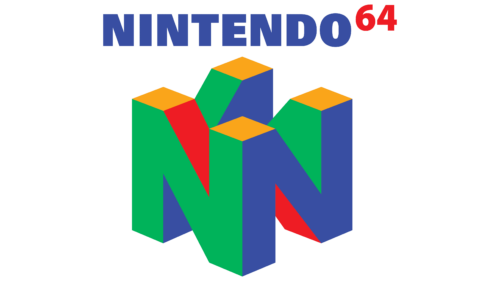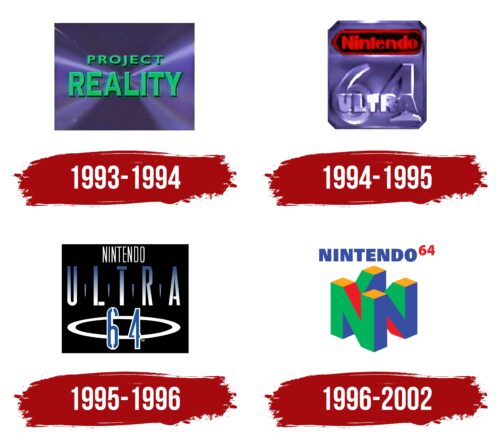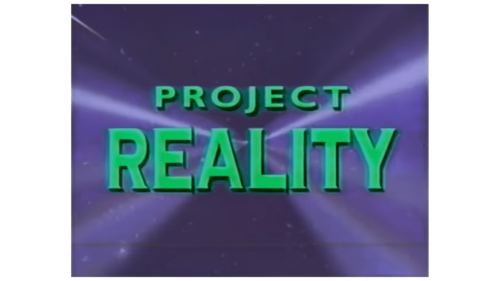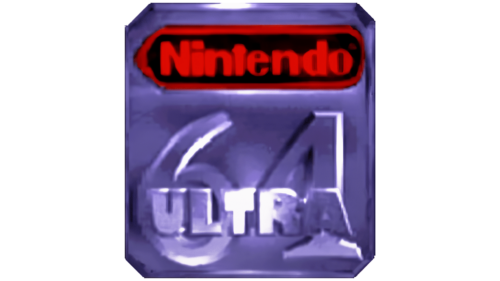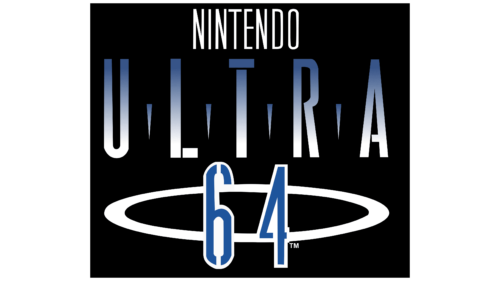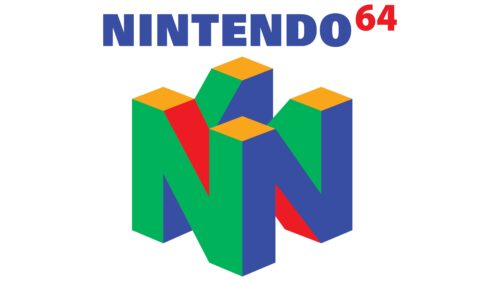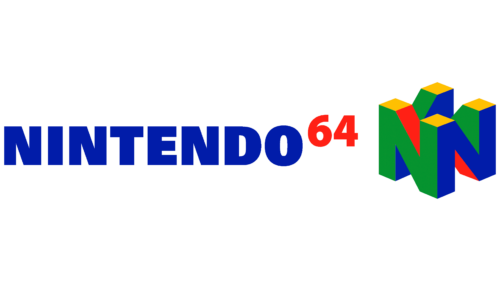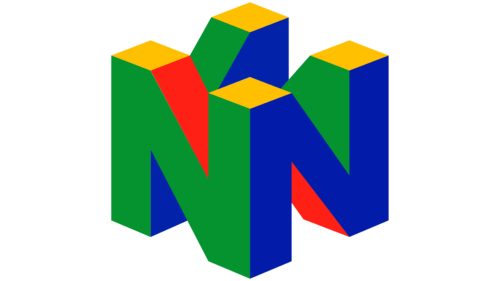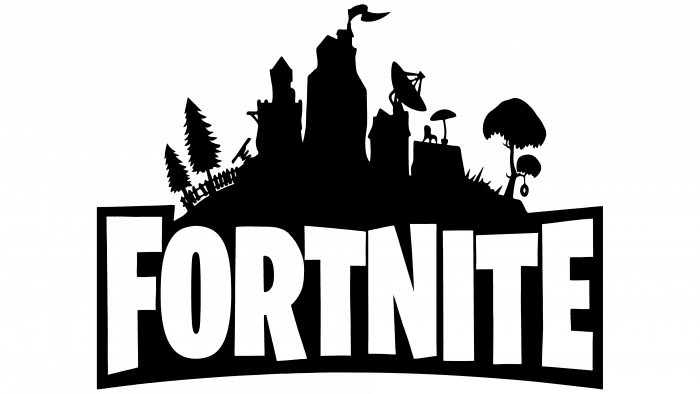Alluring and eye-catching, just like the console it represents, this is the key characteristic of the emblem of the famous video game console. Colorfulness adds personality, so the N64 (Nintendo 64) logo is widely known in the gaming environment. Moreover, three-dimensional letters are read from any position: even to the left, even to the right, which positively characterizes a comfortable console.
N64 (Nintendo 64): Brand overview
| Founded: | 1996 – 2002 |
| Founder: | Nintendo |
| Headquarters: | Japan |
| Website: | nintendo.com |
Meaning and History
The Nintendo 64 got its name from the 64-bit processor that is built into it. And the first word is translated from Japanese as “free hanafuda temple” because in the century before last, Nintendo sold nothing more than hanafuda cards. Later, video games and consoles appeared in its assortment. N64 belongs to the fifth generation of devices: this game console was produced from 1996 to 2002. It is considered the successor to the 16-bit Super Nintendo Entertainment System.
Interestingly, the process of creating the Nintendo 64 began back in 1993. At that time, the name of this model was not yet officially disclosed – it was known only as a kind of Project Reality, on which the Nintendo Integrated Research department worked together with the American software manufacturer Silicon Graphics, Inc. The console’s debut was delayed a bit because everyone was waiting for Super Mario 64 to finish.
The final version of the N64 logo appeared simultaneously – in 1996. Before that, the issue of visual identification was unresolved for two reasons. Firstly, the developers have been choosing a name for the game console for a long time: for example, in Japan, they wanted to release it under the Ultra Famicom brand, and abroad – as Nintendo Ultra 64. However, suddenly, it turned out that the Ultra Games trademark already belongs to another company; any reference to it may be considered a violation of copyright. Secondly, the emblem introduced during the announcement of the Nintendo 64 in 1995 was “raw,” so it continued to be redesigned over the next few months.
What is N64 (Nintendo 64)?
N64 is the short name for the Nintendo 64 game console. This device was created in 1996, which means it belongs to the fifth generation era. And the release of the console ended in 2002 when its successor GameCube appeared. N64 has become one of the most popular consoles in six years thanks to video games such as Super Mario 64, Banjo-Kazooie, and GoldenEye 007.
1993 – 1994
Nintendo Integrated Research and Silicon Graphics, Inc. began working together on the mysterious Project Reality in 1993. It was he who became the fundamental basis for N64, but then no one knew about it: the public received only limited information to keep the intrigue. The project’s logo was unveiled at the 1993 International Consumer Electronics Show. It contained the code name inside a blue rectangle with a space theme. The designers slightly reduced the first word and enlarged the second, splitting them into two lines and centering them.
The letters were green, with thin, dark outlines. “PROJECT” used a bold geometric sans-serif, while “REALITY” used an antiqua with thin, pointed serifs and thicker horizontal strokes for glyphs such as “L” and “T.” In addition to cosmic expanses, long rays emerging from the middle of the rectangle were depicted in the background. They illuminated the inscription from different sides, like spotlights.
1994 – 1995
Working under conditions of maximum secrecy, the Project Reality team decided in 1994 to lift the veil of secrecy. It announced that the game console would be officially called the Ultra 64 (in markets outside of Japan). Under this brand, two games even managed to be released: the arcade race Cruis’n USA and the fighting game Killer Instinct. They had a new logo in the form of a vertical rectangle with cut-off edges. That is, the geometric figure had eight corners in total, but in shape, it did not at all resemble a classic octagon. This part of the emblem was purple. It served as the basis for the Nintendo branding, which contained the company’s name in red inside an elongated oval with the same red border. And the background behind the word was black.
In the lower half of the logo was the number “64”. The word “ULTRA” was written across it. Both the letters and the numbers seemed engraved or stamped because of their color: they were the same purple as the base, and at the same time, they stood out only due to unevenly lightened and darkened outlines.
1995 – 1996
Shortly before the official debut of the N64 (Nintendo 64) console, it received a new decal. Since it was still planned to be called the Nintendo Ultra 64 at the time, that phrase took center stage. The first word was written at the very top and consisted of white vertically elongated letters with very thin lines. The second part of the inscription was in the middle line. The designers used a gradient for their design, making the glyphs half blue and half white. Between the “U,” “L,” “T,” “R,” and “A” were depicted long triangular spikes pointing downwards.
The third line contained the blue number “64”. The interior space and outlines of each digit were white. The background was the same white oval ring, similar in shape to a halo. All elements were enclosed in a black rectangle. This logo first appeared in public during the Electronic Entertainment Expo 1995.
1996 – 2002
In mid-1996, the final version of the N64 console (Nintendo 64) and its graphic symbol: a 3D figure of several letters “N” stacked together, were presented at the largest exhibition and show of the video game industry, E3 1996. To make it clear that this object is three-dimensional, the designers depicted it at a slight inclination and turned its edges forward. So you can see the junction of two “N” in front and the tops of two more similar letters behind. In this case, the sides of all four “N” are painted in different colors: green, blue, red, and yellow.
Above the intricate geometric design is the dark blue “NINTENDO” lettering. Immediately after the “O” in the lower corner is a registered trademark sign, which in this case mimics a dot. Above it hangs the red number “64”. It has superscript formatting, which makes it look like an exponent in mathematics.
Font and Colors
The cube figure, made up of four letters “N,” remains the main symbol of the N64 (Nintendo 64) even though the game console has not been released since 2002. There are rumors that the three-dimensional structure has 64 sides and the same number of vertices, but this is just a myth. It was refuted by users who calculated their real number and found out: that the 3D model actually has 24 sides and 48 vertices; you should not look for a hidden reference to the brand name here.
Univers Extra Black is the only font used in the logo of the Japanese N64 console. This is a bold sans serif designed by Adrian Frutiger. But the color scheme is much richer: it contains green (#319B44), blue (#0047B3), red (#DB3236) and yellow (#FFFF00).
N64 (Nintendo 64) color codes
| Violet Blue | Hex color: | #384ea2 |
|---|---|---|
| RGB: | 56 78 162 | |
| CMYK: | 65 52 0 37 | |
| Pantone: | PMS 7455 C |
| Pigment Red | Hex color: | #ee1c24 |
|---|---|---|
| RGB: | 238 28 36 | |
| CMYK: | 0 88 85 7 | |
| Pantone: | PMS Bright Red C |
| Pigment Green | Hex color: | #00b35a |
|---|---|---|
| RGB: | 0 179 90 | |
| CMYK: | 100 0 50 30 | |
| Pantone: | PMS 354 C |
| Orange | Hex color: | #faa51a |
|---|---|---|
| RGB: | 250 165 26 | |
| CMYK: | 0 34 90 2 | |
| Pantone: | PMS 137 C |
